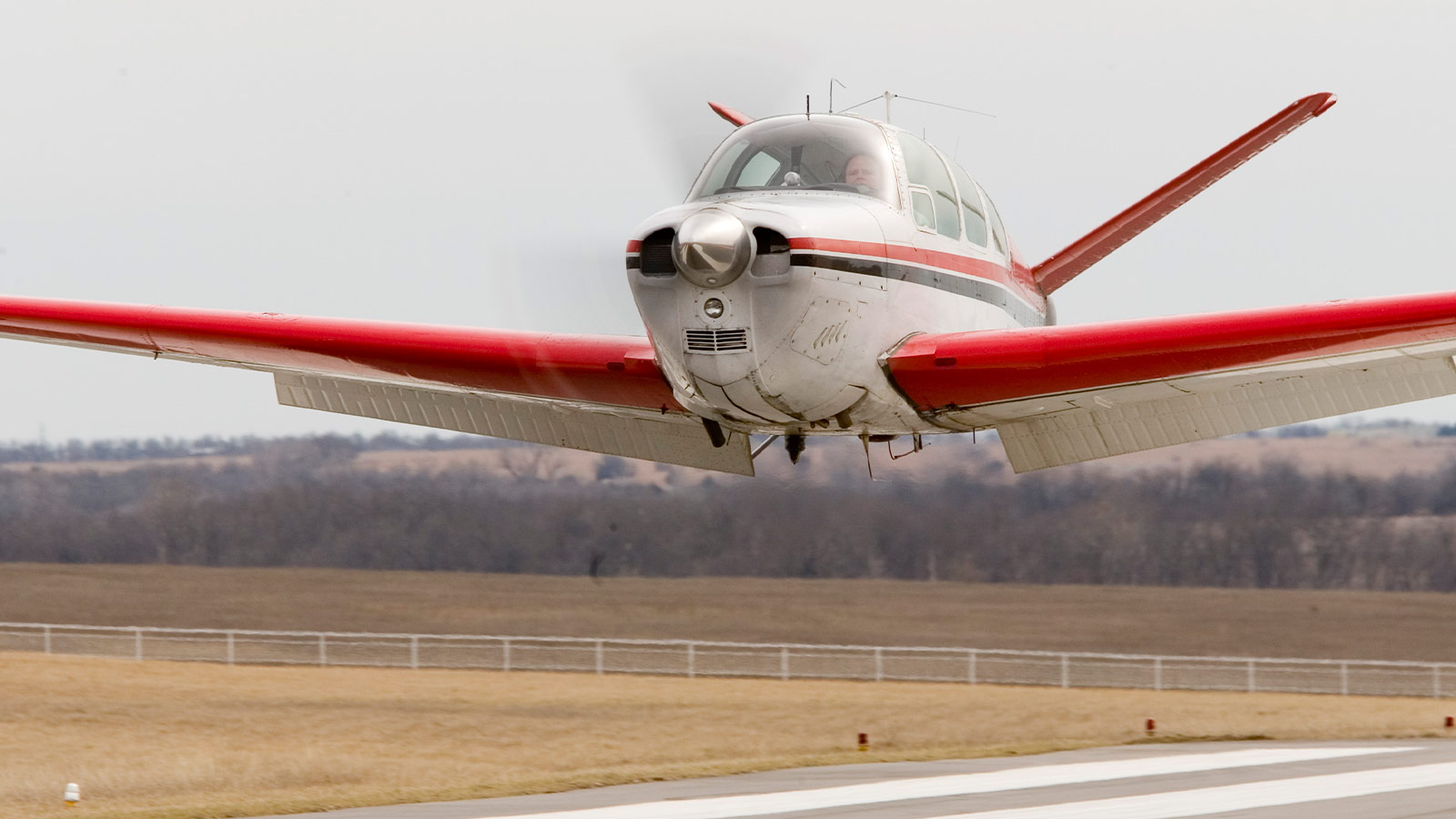Distractions and Emergencies
SAFETY SPOTLIGHT: Maneuvering Flight

Traffic Pattern Distractions
Distractions can play a large role in maneuvering accidents—an important consideration when you’re flying in the traffic pattern on a busy day, when you’re looking for traffic, running the checklist, and configuring the aircraft.
Even small distractions can lead to emergencies if not handled properly. For example, an open door in flight is just that—a distraction. Don’t allow it to overwhelm you and cause a fatal accident.
Traffic Pattern Rules
You’ll be flying at low altitudes, low airspeeds, and high angles of attack. So consider your aircraft’s limitations and observe these simple rules:
- Base to final—“Cheating” on the turn after overshooting final is extremely hazardous. If you try to compensate by steepening the turn while adding back pressure to maintain altitude, AOA increases, setting up a hazardous stall scenario, which may not be recoverable at such a low altitude. That said, trying to maintain a shallow bank while increasing the turn rate with rudder will result in crossed controls, a skid, and the potential for a low altitude spin. Instead, keep a normal turn going and once you roll out, if the approach is not salvageable, go around. ...we might accept 500 feet as the maneuvering “hard deck.” This means the flight is on airspeed, at the right altitude, with an appropriate descent rate and aligned with the runway.
- Stabilized approach—Airline crews essentially stop maneuvering 1,000 feet above the ground when on approach for landing. For lighter aircraft, we might accept 500 feet as the maneuvering “hard deck.” This means the flight is on airspeed, at the right altitude, with an appropriate descent rate and aligned with the runway. Not stable on final approach? Go around!
- Before-landing checklist—Complete the before-landing checklist, with the possible exceptions of landing flaps and prop full forward (if equipped) before turning base. If interrupted, run the entire checklist again. It’s better to take extra time than miss a critical item. Don’t have time before turning final? Go around: You’re not ready for landing. Start the checklist earlier next time.
Impossible Turn
If you experience a complete engine failure after takeoff in a single-engine aircraft, would you attempt to turn back to the airport or land straight ahead?
It’s better not to turn unless there is plenty of maneuvering room. A good rule of thumb is to land ahead if below pattern altitude and select a landing area no more than 30 degrees to either side of the nose of the aircraft. A larger turn may easily use more altitude than you have available.
Engine Out! From Trouble to Touchdown
Be spring-loaded to deal with an engine-out dilemma. Review how to tackle an engine failure in a single-engine airplane—whether under relatively benign or tricky circumstances.